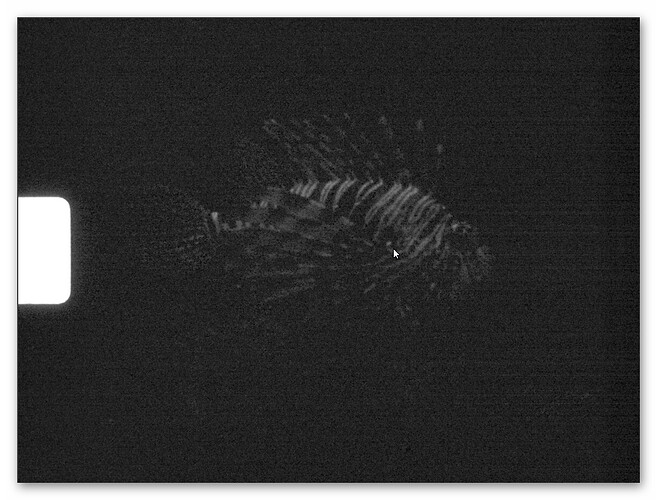That should indeed be the case. The frame you are using requires a high dynamic range for capturing. If you expose to the highlights (which you should do) most of the image areas end up really black. And it is only there were the noise stripes tend to be noticable.
Your artifical scattered light onto the front surface of the film reduces the inital contrast, pushing these dark areas above the “noticable noisestripe level”.
The noisestripes were already discussed in the original “jpg vs raw-dng” capture thread. As early as in August 2023 this image was showing them
The testimages displayed above in this thread which have been taken with closed lens lids do show these characteristic stripes as well. This basically rules out any light source as the cause. Simply, because there is no light at all present in these captures (but see below my comment about a camera backplane).
What is interesting is that the statistics of the noise shows different patterns, even in consecutive frames. But overall, everybody is “seeing” these stripes, more or less in a similar fashion. Very weird.
I think any influence of the camera cable on the noise is very remote - afterall, the signals are digital, not analog. Bad transmissions due to a bad cable do show up, but they manifest in a quite different way than these noise stripes.
One thing I have not mentioned so far but what might be important in this context: the PCB of the HQ sensor is slightly transparent. So light entering from the backside of the PCB influences the pixeldata the camera sensor is capturing. That is the reason that one of my future projects is this: “design a camera back for the HQ camera”. In this respect note that the GS camera already does come with such a backplane cover.
I have no idea where the noisestripes are coming from, but I suspect an issue/artifact in the analog portion of the HQ sensor. But in reality, everything is possible. I would rule out an issue with the lightsource.
